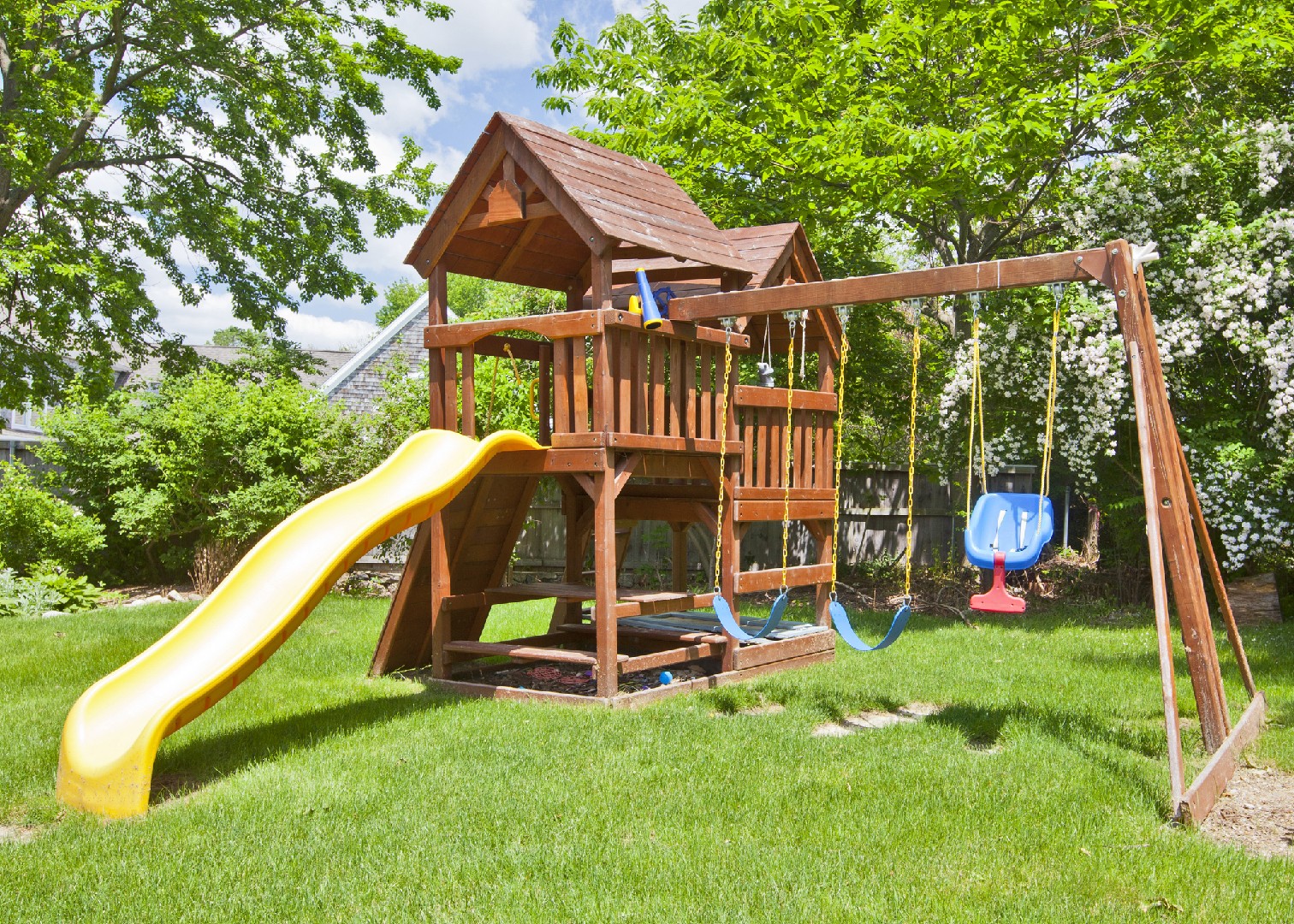![Rectangle]()
Top Play Area Equipment and Their Placement
When designing a safe and fun outdoor play area in your garden, it is important to carefully consider the selection and placement of play equipment. The right equipment can contribute to an enjoyable and engaging play experience for children of all ages, while also prioritizing their safety. Here are some key points to keep in mind when choosing and placing play equipment in your garden:
Age-Appropriateness: One of the most important criteria for selecting play equipment is its age-appropriateness. Different age groups have different physical abilities and developmental needs. It is crucial to choose equipment that is suitable for the age group of the children who will be using the play area. For younger children, equipment such as soft climbing structures, swings with secure seats, and sensory play elements like sand and water tables can be great choices. Older children may enjoy more challenging equipment like climbing walls, balance beams, and sports equipment.
Safety: Safety should always be a top priority when designing a play area. Ensure that all play equipment meets safety standards and guidelines. Look for equipment with rounded edges, smooth surfaces, and no small parts that could pose a choking hazard. Install safety surfacing beneath and around equipment to cushion falls. Regularly inspect and maintain the equipment to ensure its safety.
Variety: Variety is key to keeping children engaged and entertained in a play area. Offer a range of play equipment that allows for different types of play. This can include slides, swings, climbing frames, tunnels, and imaginative play structures. By providing a variety of options, children can choose activities that interest them, promoting both physical and cognitive development.
Integration of Natural Elements: Incorporating natural elements into the play area can enhance the overall play experience. Consider adding elements like trees, plants, rocks, or sand pits to provide opportunities for sensory exploration and imaginative play. Natural elements can also help create a more visually appealing and cohesive play space.
Placement: The placement of play equipment is crucial to maximize safety and engagement. Place equipment on a soft, shock-absorbing surface like rubber or wood chips to cushion falls. Allow for adequate spacing between equipment to prevent overcrowding and collisions. Consider the flow of the play area, ensuring that there is enough space for children to move around comfortably. Also, take into account factors like shade, accessibility, and visibility when determining the placement of play equipment.
By carefully selecting and placing play equipment in your garden, you can create a safe and enjoyable outdoor play area for children to explore, learn, and have fun. Remember to regularly inspect and maintain the equipment to ensure its safety. Providing age-appropriate, varied, and integrated play equipment will stimulate children's physical, cognitive, and imaginative development. So go ahead and get creative, designing a play area that will provide endless hours of outdoor fun for the children in your life.





